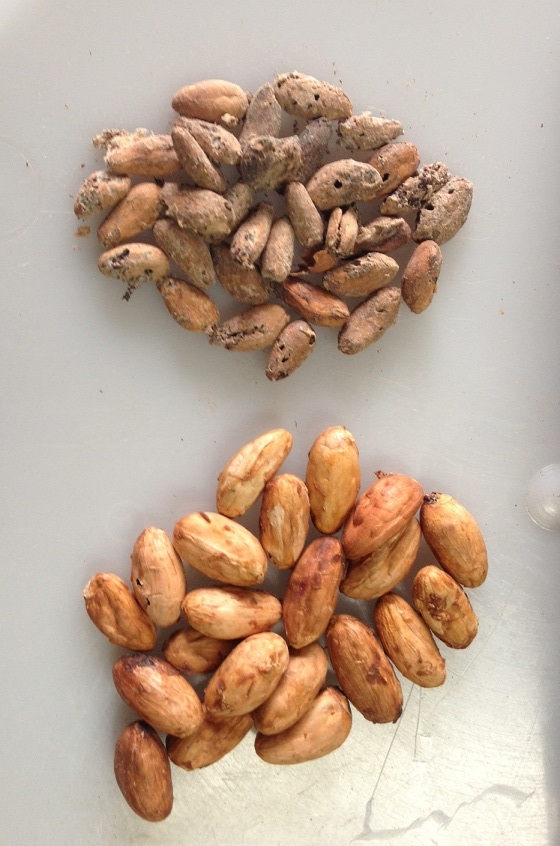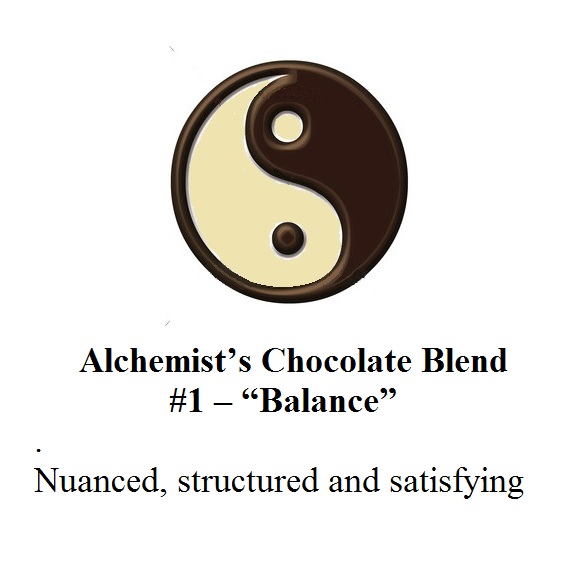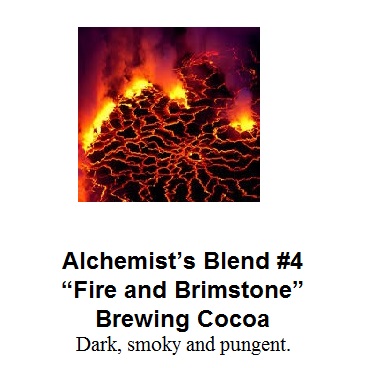How do you find the beans you sell?
Lots of ways. I have long standing relationships with importers, farms and individuals selling cocoa. I also buy beans from chocolate makers that have brought in beans and have too many or wish to share. Routinely farms contact me as do sellers that have found me on the web. Basically I have no one avenue and am always looking for good beans to offer. Feel free to contact me if you have some. I’ll need a sample (more below on that).
Whereas I have no one source of beans, I do have one method I use for purchasing beans. Or at least deciding whether to buy them. Whenever I am offered beans I request a sample be sent for evaluation. And I do just that.
I look at the preparation when it comes in. Is it clean? Well and evenly fermented? I break a few beans open. Light break? Purple? Rich brown? Notes are made.
Smell it. Is it musty or moldy? Does it smell sharp? Fruity? Woody? Whatever it is, I record it.
Next I roast it up. I’m not looking for the perfect roast here. It is the rare bean that needs an exact profile, so I just roast it on a standard profile, relying heavily on my sense of smell, the temperatures and the clock. I record the smells and aromas and put as many names or gestalt impressions down as I can.
After cooling, I take my first taste of the beans. 90% of the time I know right then and there if I want to buy the beans. But I don’t stop there. I make a batch of chocolate. The chocolate I make for evaluation is the same every single time. It’s my way of normalizing what I am tasting. It is a 75% dark with 5% cocoa butter.
700 g nibs
50 g cocoa butter
250 g sugar.
1 t lecithin
Isn’t the metric system great? I melt the cocoa butter to 200-250 F and add the lecithin (I bake with the resulting chocolate a lot and lecithin makes it easier to handle). I warm my melanger bowl and stones, nibs and sugar in the oven for about ½ hour at 150 F. In goes the cocoa butter into the warm bowl and 1/3 of the nibs. 15 minutes later another 1/3 of the nibs go in, and 10 minutes later the remain nibs go in with the sugar.
I note the smells coming off and taste the proto-chocolate immediately. After that I taste it ever few hours while I am around and at some point after it is fully smooth (12-18 hours) I make a judgment call as to whether to continue or stop the batch. What I’ve found is that good chocolate won’t go bad, but sometimes questionable chocolate will turn around with more time. After I deem it as good as it’s going to get I pour it up in a bag and let it set up. Untempered. Although the last ½ dozen batches have been tempered using cocoa butter seed from the EZTemper (review coming – it rocks). After it sets up and I taste it and decide if I want it and how much I want. But no notes are taken.
Assuming I get the beans, I pull a sample once the pallet of beans arrive, I check my previous notes and make another batch of chocolate. These two samples I now compare and make sure they are the same or close enough. Sometimes I take the opportunity on the 2nd batch to fine tune to roast profile and note that if I do.
At this point I sit down and Taste (not the capital) the chocolate. I make notes and write my review incorporating where appropriate the other notes I’ve taken. And I construct the spider charts. And you see the results of that when the beans go up for sale.
And that is how I find and bring in beans. A little peak behind the scenes.
Send in your Ask the Alchemist questions to questions@chocolatealchemy.com















 Finally, keep an eye out for a bunch of new hobby grade molds. Great for getting started and for gifts.
Finally, keep an eye out for a bunch of new hobby grade molds. Great for getting started and for gifts.


